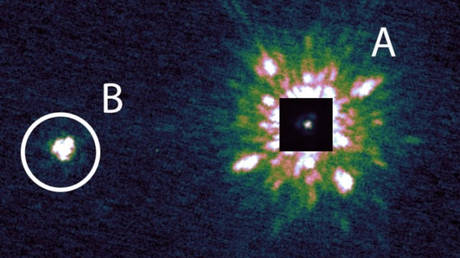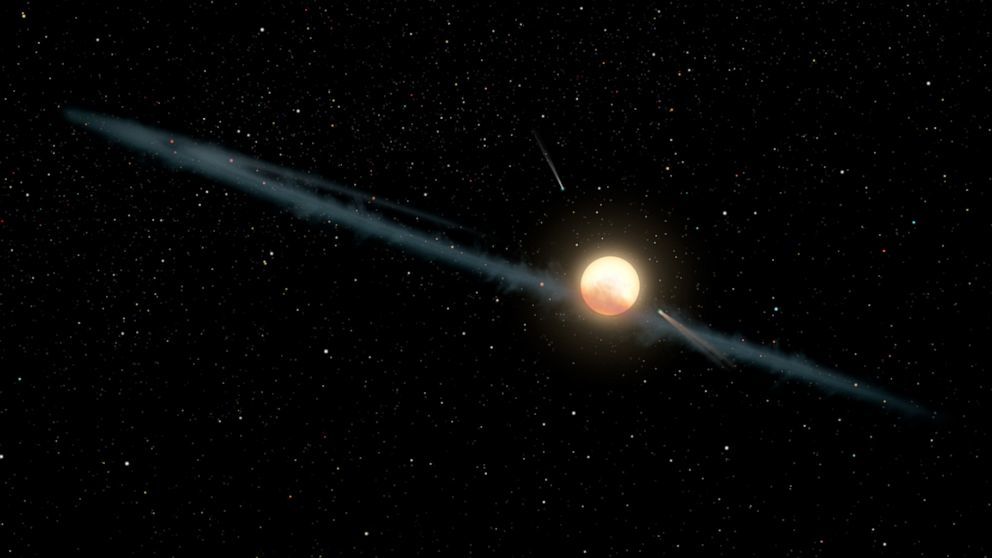
Astronomers have discovered a fresh clue that could help unravel the mystery of a bizarrely dimming star. The repeated plunges into darkness previously led some experts to suggest it could be evidence of intelligent alien life.
The otherwise normal star KIC 8462852, better known as Boyajian’s Star, is slightly larger and hotter than the Sun and sits around 1,480 light-years from Earth in the constellation Cygnus.
The new breakthrough suggests that the star has a binary companion that could be contributing to its unexplained flickering.
The two stars are separated by a distance of 880 Astronomical Units, that’s 880 times the average distance between Earth and the Sun, and Boyajian’s Star is the bigger of the two.
The companion has been named KIC 8462852 B. It’s a red dwarf star and is roughly 0.44 times the mass and 0.45 times the size of the Sun.
Scientists first noticed the unusual fluctuations in the light back in 2015. The star was found to dim by as much as 22 percent and the dark periods can last up to a week.
This behavior ruled out planets as an explanation as when an exoplanet passes between a star and Earth it only dims the star by around one percent or less and, unlike Boyajian’s Star, it happens at regular intervals.
These analyses led some experts to postulate that signs of intelligent alien life had been detected.
Specifically, researchers put forward the idea that the star was surrounded by a megastructure known as a Dyson sphere, which is designed to capture as much light as possible.
Freeman Dyson, the mathematician and physicist who popularized the concept, said that such a structure could help power an advanced civilization.
However, further research pointed to a more prosaic answer as some wavelengths were found to be blocked more than others, something that wouldn’t happen if a solid object, such as an alien megastructure, was in the way.
Scientists have now settled on thin dust and debris as the most likely explanation. The discovery of the binary star adds weight to this theory as it could help explain the presence of all this material.

“The binary companion may influence the long-term evolution of the system,” the astronomers wrote in their new paper.
This theory is bolstered by the recent discovery that larger gravitational forces can force widely-spaced stellar binaries to move in very close to their mutual center of mass multiple times over the course of around 10 billion years, like a very slow cosmic accordion.
This could eventually result in the disruption of planets and other small orbiting bodies where they’re stretched and torn apart by gravitational interactions, resulting in clouds of debris.
Like this story? Share it with a friend!




